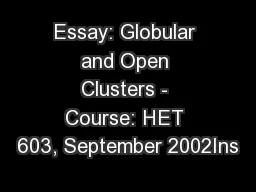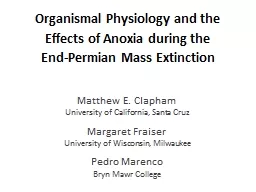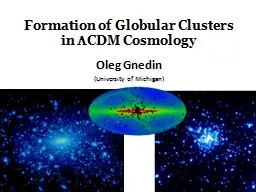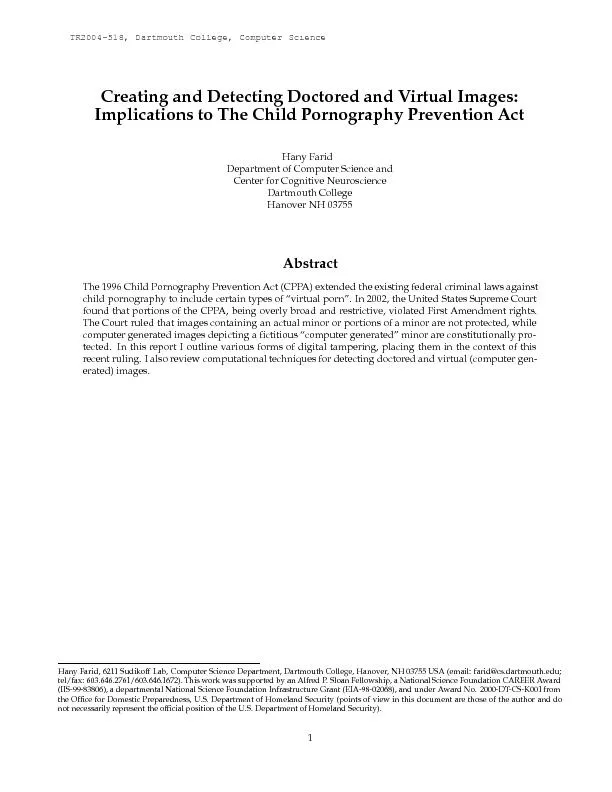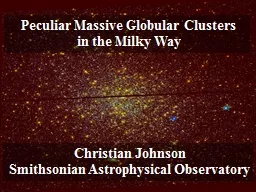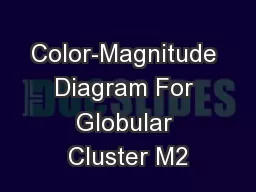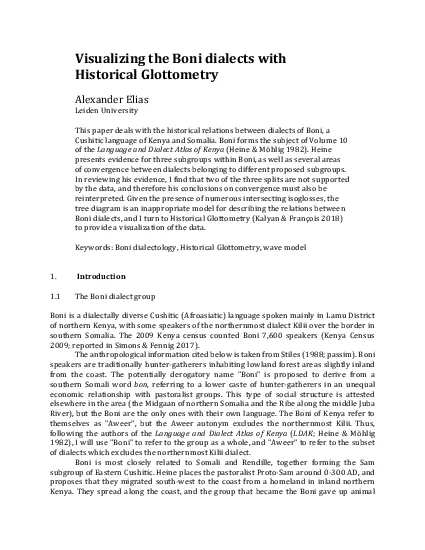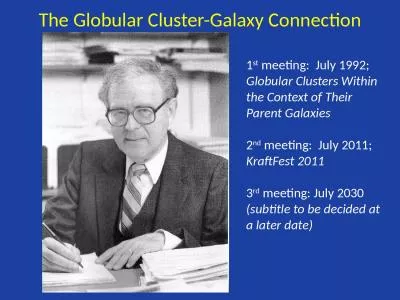PDF-Essay: Globular and Open Clusters - Course: HET 603, September 2002Ins
Author : marina-yarberry | Published Date : 2016-12-26
Essay Globular and Open Clusters Course HET 603 September 2002Instructor Dr Chris Flynn Student Eduardo Manuel Alvarezattraction Being so far as they are all the
Presentation Embed Code
Download Presentation
Download Presentation The PPT/PDF document "Essay: Globular and Open Clusters - Cour..." is the property of its rightful owner. Permission is granted to download and print the materials on this website for personal, non-commercial use only, and to display it on your personal computer provided you do not modify the materials and that you retain all copyright notices contained in the materials. By downloading content from our website, you accept the terms of this agreement.
Essay: Globular and Open Clusters - Course: HET 603, September 2002Ins: Transcript
Download Rules Of Document
"Essay: Globular and Open Clusters - Course: HET 603, September 2002Ins"The content belongs to its owner. You may download and print it for personal use, without modification, and keep all copyright notices. By downloading, you agree to these terms.
Related Documents

